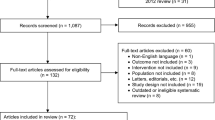Abstract
Veractive bladder (OAB) affects millions of people in the United States and significantly impacts their quality of life. New antimuscarinic anticholinergic medications have improved the treatment of OAB, offering patients efficacy equal to that of immediate-release oxybutynin with fewer side effects and an improved dosing schedule. The commonly reported range of reduction of urge incontinence episodes is between 46% and 92%. Although patients are improving, continence rates are lower and many responders continue to leak significantly. The literature supports that the efficacy of anticholinergics is enhanced by dose escalation, but using higher dosages has not become routine in clinical practice. Although dose escalation can be implemented with all of the anticholinergics, it is done most easily and approved by the US Food and Drug Administration with extended-release oxybutynin. This paper critically evaluates the pros and cons of dose escalation in the hope to improve efficacy in patients with OAB.
Similar content being viewed by others
References and Recommended Reading
Thom DH: Overactive bladder: epidemiology and impact on quality of life. Patient Care 2000:6–14.
Wagner TH, Hu TW: Economic costs of urinary incontinence in 1995. Urology 1998, 51:355–361.
Appell RA: Clinical efficacy and safety of tolterodine in the treatment of overactive bladder: a pooled analysis. Urology 1997, 50:90–96.
Chancellor M, Freedman S, Mitcheson HD, et al.: Tolterodine, an effective and well-tolerated treatment for urge incontinence and other overactive bladder symptoms. Clin Drug Invest 2000, 19:83–91.
Appell RA, Sand P, Dmochowski R, et al.: Prospective randomized, controlled trial of extended-release oxybutynin chloride and tolterodine tartrate in the treatment of overactive bladder: results of the OBJECT Study. Mayo Clin Proc 2001, 76:358–363.
Van Kerrebroeck P, Kreder K, Jonas U, et al.: Tolterodine oncedaily: superior efficacy and tolerability in the treatment of the overactive bladder. Urology 2001, 57:414–421.
Diokno AC, Appell RA, Sand PK, et al.: Prospective, randomized, double-blind study of the efficacy and tolerability of the extended-release formulations of oxybutynin and tolterodine for overactive bladder: results of the OPERA Trial. Mayo Clin Proc 2003, 78:687–695. Well-designed head-to-head study of extended-release oxybutynin versus tolterodine. The efficacy and tolerability of each compound are compared.
Dmochowski RR, Davila GW, Zinner NR, et al.: Efficacy and safety of transdermal oxybutynin in patients with urge and mixed urinary incontinence. J Urol 2002, 168:580–586. The efficacy and tolerability of oxybutynin transdermal delivery system is presented. OXY-TDS has an excellent systemic side-effect profile.
Burgio KL, Locher JL, Goode PS: Combined behavioral and drug therapy for urge incontinence in older women. J Am Geriatr Soc 2000, 48:370–374.
Burgio KL, Locher JL, Goode PS, et al.: Behavioral vs drug treatment for urge urinary incontinence in older women. JAMA 1998, 280:1995–2000.
Anderson RU, Mobley D, Blank B, et al.: Once-daily controlled versus immediate-release oxybutynin chloride for urge urinary incontinence. J Urol 1999, 161:1809–1812. This paper illustrates the excellent efficacy that can be achieved with anticholinergics by dose escalation.
Versi E, Appell R, Mobley D, et al.: Dry mouth with conventional and controlled-release oxybutynin in urinary incontinence. Obstet Gynecol 2000, 95:718–721.
Gleason DM, Susset J, White C, et al.: Evaluation of a new once-daily formulation of oxybutynin for the treatment of urinary urge incontinence. Urology 1999, 54:420–423.
O’Leary M, Erickson JR, Smith CP, et al.: Changes in voiding patterns in multiple sclerosis patients with controlled-release oxybutynin. Int J MS Care 2002, 4:116–119.
O’Leary M, Erickson JR, Smith CP, et al.: The effect of controlled-release oxybutynin on neurogenic bladder function in spinal cord injured patients. J Spinal Cord Med 2003, 26:159–162.
Van Kerrebroeck P, Amarenco G, Thuroff JW, et al.: Dose-ranging study of tolterodine in patients with detrusor hyperreflexia. Neurourol Urodynam 1998, 17:499–512.
Larsson G, Hallen B, Nilvebrant L: Tolterodine in the treatment of overactive bladder: analysis of the pooled phase II efficacy and safety data. Urology 1999, 53:990–998.
Abrams P, Kelleher CJ, Kerr LA, et al.: Overactive bladder significantly affects quality of life. Am J Manag Care 2000, 6:580–590.
Davila GW, Neimark M: The overactive bladder: prevalence and effects on quality of life. Clin Obstet Gynecol 2002, 45:173–181.
Author information
Authors and Affiliations
Rights and permissions
About this article
Cite this article
MacDiarmid, S.A. Overactive bladder: Improving the efficacy of anticholinergics by dose escalation. Curr Urol Rep 4, 446–451 (2003). https://doi.org/10.1007/s11934-003-0025-z
Issue Date:
DOI: https://doi.org/10.1007/s11934-003-0025-z




